Birding Tour Ethiopia - Discover the Endemic Birds
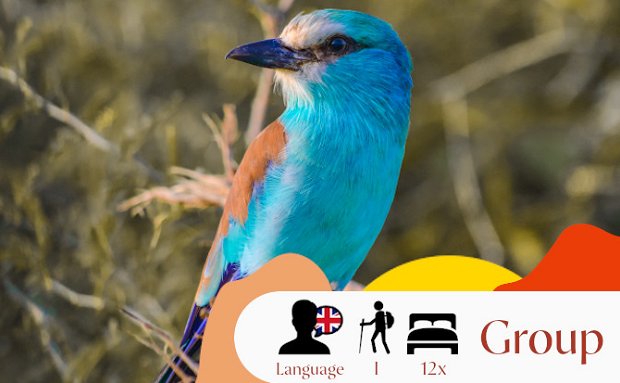
Ethiopia is a treasure trove of Africa’s most remarkable endemic bird species. Known as the 'Roof of Africa,' this rugged and ancient land is home to nearly 50 endemic and near-endemic birds. Our special birding tour showcases the best of Ethiopia’s unique birdlife, combined with breathtaking scenery, diverse habitats, and carefully selected, eco-friendly accommodations. Ethiopia stands out as one of the most captivating birding destinations in Africa, with new discoveries unfolding every year. With its stunning landscapes, vibrant avifauna, and ever-changing habitats, Ethiopia offers an unforgettable and sustainable birding experience for nature enthusiasts.

Accompanied by one of our highly experienced, English-speaking birding guides, you’ll explore Ethiopia’s diverse habitats—from the lowland savannahs of the Rift Valley to the afro-alpine highlands of Bale Mountains National Park. Along the way, you'll witness an incredible array of bird species, with our expert guide enriching the experience by leading you to some of the country's rarest species, including the Ankober Serin, Rouget’s Rail, and Spot-breasted Lapwing. For an immersive adventure, you'll stay in carefully chosen lodges nestled in nature, where birdwatching starts right at your doorstep. This journey blends our commitment to sustainability, authenticity, and eco-friendly travel with unforgettable encounters with Ethiopia's extraordinary wildlife.
Dates:
- GR02-01: December 2 to 14, 2025
- GR02-02: March 24 to April 5, 2025
Tour code: GR02
Operator: SimienEcoTours
Gallery
Itinerary & In/Exclusions
Day 1
Welcome to the capital and the Ethiopian highlandsTravel: 3 h; 120 km
ARRIVAL IN ADDIS ABEBA – DEBRE LIBANOS Upon your arrival at Addis Ababa’s airport, your guide will warmly welcome you and transfer you directly to the heart of the capital. Your first stop will be the charming Ghion Hotel, a historic colonial-style hotel set amidst lush gardens. After enjoying a delicious buffet breakfast, you’ll have time to explore the beautiful grounds, which are a haven for birdwatchers, with mature trees and vibrant plant life offering an ideal introduction to Ethiopia’s rich bird species.
Following a freshly brewed Ethiopian coffee, you’ll begin your scenic drive north, leaving the city behind as you head towards Debre Libanos. Known for its ancient and revered monastery, this site also offers breathtaking views of the dramatic gorge below, as well as unique wildlife encounters. You’ll spot not only a variety of birds but also fascinating mammals such as the endemic Gelada Baboons.
Bird species you might see include: Ruppell’s Vulture, Hooded Vulture, Brown-rumped Seedeater, Grey-headed Sparrow, Baglafecht’s Weaver, Abyssinian Slaty, Dusky Flycatchers, African Rock Martin, Tacazze Sunbird, Red-eyed Dove, Dusky Turtle Dove, Wattled Ibises, White-collared Pigeon, Blue-winged Goose, Abyssinian Longclaw, Erlanger’s and Thekla Larks, Botta’s Wheatear, Moorland Chat, Groundscraper Thrush, Lammergeyer, Little Rock-Thrush, Ruppell’s Chat, Mocking Cliff-Chat, and Cinnamon-breasted Bunting.
This journey offers an immersive blend of nature, culture, and eco-friendly adventure, aligning perfectly with your desire for meaningful and sustainable travel experiences.
Meals: B/L/D
Accommodation: Ethio German Park Debre Libanos
Day 2
Looking for the first highly localised endemic birds in the Jamma CanyonTravel: 5-6 h; 210 km
DEBRE LIBANOS – JAMMA CANYON – DEBRE BIRHAN. Today you’ll start early in the morning so that we can reach the bottom of the wide Jamma Canyon. Plenty of birds of prey and the endemic Harwood's Francolin are found here, but we need to be there on time before the temperatures are getting too high and birds are hiding in the bushes. After a couple of hours looking for the bird species, we make our way eastward through the wide plains of the Ethiopian highlands with more possibilities of spotting birds. In the afternoon we’ll reach the city of Debre Birhan.
Selection of species: Harwood's Francolin, Erckel’s Francolin, Fox Kestrel, Yellow-fronted Canary, Ruppell’s Chat, Mourning (Abyssinian Black) Wheatear, Red-billed Pytilia, Yellow-rumped Serin, Foxy Cisticola, Abyssinian Waxbill, Vinaceous Dove, Red-billed Quelea, Abyssinian Roller, Rock-Thrushes, Speckle-fronted Weaver and White-billed Starling.
Meals: B/L/D
Accommodation: Getva Hotel Debre Birhan
Day 3
Start discovering the Great African Rift ValleyTravel: 5 h; 250 km
DEBRE BIRHAN – ADDIS ABABA – BISHOFTU. In the morning you have the chance to spot some birdlife directly on the escarpment of the Great Rift Valley, in a place called Menelik’s window. This is one of the best places to see the endemic Ankober Serin.
After this small detour we make our way back to Addis Ababa and into the Great African Rift Valley, which spreads all over the African continent and has a vast variety of birds and wildlife. The Rift Valley with its more than 400 bird species will give you plenty of chances along your today’s drive to make stops.
Our first stop in the Great African Rift Valley the city of Bishoftu situatied at seven crater lakes. You stop along the way at Chelekleka wetland with its populations of Marabou Storks, Cattle Egrets and Spur-winged lapwings. After some resting you will go on a kayak boat ride in the late afternoon on one of the crater lakes for some birding. Not only waterbirds are common here. The tree tops are often taken by Lapped-faced vultures and Yellow-billed Kites.
Selection of species: Ankober Serin, Augur Buzzard, Speckled Pigeon, Cape Crow, Marabou Stork, Cattle Egret, Spur-winged Lapwing, Hadada Ibis, Great Egret, Squacco Heron, Long-tailed Cormorant, Pied Kingfisher, Speckled Mousebird, Hooded Vulture, Rüpell’s Vulture, Tawny Eagle, Yellow-billed Kite, Egyptian Goose, Spur Winged Goose, Red-knobbed Coot, Ruff, Pintail, Garganey, Northern Shoveller, Southern Pochard, Pygmy Goose and White-backed Duck.
Meals: B/L/D
Accommodation: Kuriftu Resort & Spa Bishoftu
Day 4
Birding at Lake Ziway & LanganoTravel: 3 h; 180 km
BISHOFTU – LANGANO. Starting from Bishoftu this morning your descent leads you to the Rift Valley lakes of Koka and Ziway. Not only the lakes but also Awash River are good places to spot birds.
African Fish Eagles soar overhead or utter their distinctive yodelling calls from prominent perches. Pied Kingfishers hover over the water surface and tiny Malachite Kingfishers cling to the papyrus stems, while emergent vegetation provides suitable habitat for Black Crakes and handsome African Jacanas balance on the floating lily pads. Where the local fishermen bring their catch ashore we can watch remarkably tame Marabou Storks and Hamerkops. Flocks of Great White Pelicans are frequently present. In the late afternoon you will arrive at your lodge in the riverside forest around the lake shore of Lake Langano.
Selection of species: Knob-billed Duck, Red-billed and Hottentot Teals, Yellow-billed Stork, Squacco and Purple Herons, Great and Intermediate Egrets, Glossy Ibis, Pink-backed Pelican, Reed (or Long-tailed) Cormorant, African Darter, Western Marsh Harrier, the superb Black Crowned Crane, Black-winged Stilt, Black-tailed Godwit, Marsh and Wood Sandpipers, Little Stint, Ruff, Collared Pratincole, Grey-headed, Black-headed and Lesser Black-backed Gulls, Whiskered and White-winged Terns, and Sand Martin (or Bank Swallow), Black Heron, Lesser Jacana, Allen’s Gallinule, Lesser Moorhen
Meals: B/L/D
Accommodation: Bishangari Lodge,Langano
Day 5
Excursion trip to Abijata Shalla National ParkTravel: 2-3 h; 80 km
LAKE LANGANO & ABIJATA-SHALLA NATIONAL PARK. With the first sunlight you will go on a bird walk (1.5 h) along the lake shore and into the forest where Silvery-checked Hornbills and Hadada Ibises and the endemic Yellow-fronted Parrots are found.
There is a rich suite of specialities in this area, including such endemics and near-endemics as the gorgeous White-cheeked Turaco, the pretty little Black-winged Lovebird and White-rumped Babbler. Other special birds include the restricted-range Clapperton’s Francolin, the sought-after Red-throated Wryneck and the uncommon and localized White-winged Black Tit.
Return for breakfast in the lodge garden and set off for a half day excursion to the picturesque Abijata-Shalla national Park with its three lakes and a resident population of thousands of Lesser and Greater Flamingos. Amongst the shorebirds and other waterbirds present at the lake, we can expect to see Pied Avocet, Kittlitz’s Plover and Gull-billed Tern.
Selection of species: Common Ostrich, Southern Pochard, Saddle-billed Stork, African Harrier-Hawk, Gabar Goshawk, Ring-necked, Tambourine and Lemon Doves, Blue-spotted Wood Dove, Speckled Mousebird, Narina Trogon, Black Scimitarbill, Abyssinian Ground Hornbill, Silvery-cheeked and Von der Decken’s Hornbills, Red-fronted and Yellow-fronted Tinkerbirds, Bearded Woodpecker, Scaly-throated Honeyguide, Western Black-headed Batis, Slate-coloured Boubou, Grey-backed Fiscal, Red-shouldered Cuckooshrike, Black Saw-wing, Common House Martin, the smart Rüppell’s Robin-Chat, Common (or Rufous-tailed) Rock Thrush, Northern Crombec, Willow Warbler, Rattling Cisticola, Tawny-flanked Prinia, Yellow-bellied Eremomela, Buff-bellied Warbler, Eurasian Blackcap, Northern Black Flycatcher, Red-billed Oxpecker, Marico and Beautiful Sunbirds, Baglafecht, Little and Lesser Masked Weavers, Black-and-white Mannikin and African Citril, Yellow-fronted Parrot, Black-winged Lovebird, Bandet Barbet, Green-backed Honeybird, Red-capped Robin-Chat, Scaly Francolin, Western Banded Snake Eagle and Green Twinspot.
Meals: B/L/D
Accommodation: Bishangari Lodge, Langano
Day 6
The dryland savanna of Swayne's Hartebeest SanctuaryTravel: 3 h; 150 km
LAKE LANGANO – SWAYNE’S HARTEBEEST SANCTUARY – HAWASSA. Today’s journey lets you discover a rather more impressive savannah landscape in the Swayne’s Hartebeest Sanctuary which lies along your way to the south. Famous for its endemic population of several hundred Swayne’s hartebeest antelopes, it is the only sanctuary over the country where this game still survives. Furthermore, the beautiful savannahs are another opportunity to discover more Rift Valley birds.
In the afternoon you continue your drive to the capital of the Sidama region Hawassa. The city lies directly on the lake and many birds can be seen in the area of the fish market which attracts a lot of other animals. We stay overnight in a nice resort where we can relax on the side of a swimming pool.
Selection of species: Black and Goliath Heron, Marabou Stork, Hamerkop, Hadada Ibis, Pygmy Geese, Fulvou and White-faced Whistling Duck, Knob-billed Duck, Black Crake, African Jacan, Pied, Malachite, Grey-headed and Woodland Kingfisher, Red-breasted Wryneck, Green Wood-hoopoe, Sulphur-breasted Bush Shrinke, White-browed Robin Chats, African Thrushe, Rufous Chatter, Swamp Warbler, Red-faced Crombece, Wattle-eyes, Puffbacks, Spoted Creeper.
Meals: B/L/D
Accommodation: Haile Resort, Hawassa
Day 7
Tropical birds around Hawassa and the Wondo Genet hot springsTravel: 2 h; 70 km
WONDO GENET AND HAWASSA. In the morning we set off to Wondo Genet, a hot spring resort (there is a naturally heated open air pool) set among forested hills. The springs are said to have curative properties and the Emperor Haile Selassie had a lodge here, now part of the hotel. In the gardens of the hotel you will see birds like the Silvery-cheeked Hornbill and Yellow-fronted Parrot. Behind the hotel there is a juniper forest, where you can spot the oriols, woodpeckers, starlings, swallow, and my others. You will also see some mammals like the Colobus monkey, Anubis baboon and bushbuck.
Back in Hawassa we will have a walk along the less visited shore to see the birdlife along the lakeshore.
Selection of species: Silvery-cheeked Hornbill, White-cheeked Turaco, Yellow-fronted Parrot, Black-headed Forest Oriole, Golden-backed Woodpecker, Redwing Starling, Grosbeak Weaver, Mountain Wagtail and Black-roughwing Swallow, Spotted Creeper, Banded and Double-toothed Barbets, Woodland , Grey headed and Malachite Kingfishers, Ruppel’s Robin Chat, Gray-headed Batis, Black-headed Oriole, Fawn-breasted Waxbill, Gray-headed Woodpecker, Brown Snake Eagle, Black-winged Lovebird, Northern Carmine Bee-eater and White-rumped Babbler.
Meals: B/L/D
Accommodation: Haile Resort, Hawassa
Day 8
The Bale Mountains National Park - one park, many worldsTravel: 4-5 h; 220 km
HAWASSA – DINSHO – BALE MOUNTAINS NATIONAL PARK. You will enter the highland ecosystems today leaving the Great African Rift Valley behind for a couple of days. Bale Mountains National Park – one park, but many worlds – is awaiting you and one of the most diverse landscapes in the world! The park is also home to fourteen of Ethiopia’s endemic birds and offers superb birding opportunities in the Afro-alpine moorlands and highland forests.
On your today’s long drive to the National Park, you will have the chance to make stops at its northern outposts in the Gaysay grasslands where we will stop to look for Red-chested and Grey-rumped Swallows. We will also stop at regular sites for African Black Duck and Red-knobbed Coot. We undertake a walk in the old juniper forests searching in particular for roosting nightbirds, such as the Cape Eagle-Owl, the poorly-known Abyssinian Owl and Montane Nightjar, and quite possibly also African Wood Owl and Verreaux’s Eagle-Owl.
The area is rich in Bohor reedbucks and the endemic Mountain-Nyala-Antelopes as well as highland birds. The endemic Black-headed Siskin is common. Almost always in flocks, this little-known finch inhabits moorlands with giant lobelia, alchemilla, tussock grass and giant heath, highland grasslands and the open areas of montane forests. In the afternoon you continue your journey to Goba where you take a room in the Wabe Shebele Hotel.
Selection of species: Red-chested and Grey-rumped Swallow, African Black Duck, Red-knobbed Coot, Cape Eagle-Owl, Abyssinian Owl and Montane Nightjar, African Wood Owl and Verreaux’s Eagle-Owl, Rouget’s Rail, Thick-billed Raven, Blue-winged Goose, Abyssinian Long Claw, White-collared Pigeon, Yellow-crowned Canary, Red-breasted Wheatear, White-backed Tit, Spot-breasted Plover, Abyssinian Catbird, Montane White-eye, Abyssinian Ground Thrush, and Black-winged Love Bird.
Meals: B/L/D
Accommodation: Wabe Shebele Hotel, Goba
Day 9
The afro-alpine Sanetti Plateau with its birds and the Ethiopian wolfTravel: 4 h; 140 km
SANETTI PLATEAU AND HARENNA FOREST. A part of Ethiopia’s endemic bird species can be found in and around Bale Mountains National Park. Your day excursion today will lead you for a full day to the Sanetti Plateau and Harenna Forest.
The Sanetti high plateau is the highest and biggest plateau landscape on the African continent and you will drive up to 4.100 masl to explore its nature today. Not only the habitat of the largest Ethiopian wolf population (aprox. 300 individuals) which got very rare and endangered almost all over Ethiopia but also for the endemic Rouget’s Rail, Wattled Ibis, Blue-winged Goose and the Spot-breasted Plover as well as migratory populations of Wattled Cranes. Sanetti’s bare landscapes will stand in contrast to its vast birdlife and open landscapes with wide views give you almost everywhere great opportunities to spot animals. Augur Buzzards are the common birds of prey but commonly seen are also Steppe Eagles and Cape Eagle Owls.
After crossing the Sanetti Plateau we reach the Harenna Forest, which is full with small rivers and through bamboo forests where the endemic Bale monkeys feed from fresh bamboo leaves. This forest is also one of the last refuges in Ethiopia for the Black-maned lions.
Selection of species: Steppe Eagle, Rufous-breasted Sparrowhawk, Common Buzzard, African Olive Pigeon, Dark-capped Bulbul, African Stonechat, African Dusky Flycatcher, Cinnamon Bracken and Brown Woodland Warblers, African Hill Babbler, Montane White-eye, Slender-billed Starling, Sharpe’s Starling, Tacazze Sunbird, Abyssinian Crimsonwing, Yellow-bellied Waxbill and Yellow-crowned Canary, Ruddy Shelduck, Red-billed Chough, Golden, Black (or Great) Sparrowhawk and Mountain Buzzard, Rouget’s Rail, the attractive Spot-breasted Lapwing, Chestnut-naped Francolin, Abyssinian Woodpecker, Ethiopian (or Abyssinian) Oriole, Abyssinian Catbird, Abyssinian Slaty Flycatcher, White-backed Black Tit and Abyssinian Longclaw, Moorland Francolin, Abyssinian Ground Thrush.
Meals: B/L/D
Accommodation: Wabe Shebelle Hotel,Goba
Day 10
On the way to the Awash National ParkTravel: 8-9 h; 450 km
BALE MOUNTAINS NATIONAL PARK – AWASH NATIONAL PARK. After some days one of in Ethiopia’s highest mountain ranges you will return back to the Great African Rift Valley. A long day’s drive will bring you to Awash National Park which is considered one of the country’s best sites for birding with approx. 460 species recorded so far. Today’s drive will lead you from the Bale Mountains trough the Arsi Mountains slowly down to the Rift Valley again. Along the way there will be short opportunities for stops before you reach your lodge located directly at some hot springs.
Selection of species: Different highland and lowland species along the way, but it’s mainly a driving day.
Meals: B/L/D
Accommodation: Doho Lodge ,Awash
Day 11
Game drives & birding in Awash National ParkTravel: 2-3 h; 60 km
From your lodge you will have one game drive and one bush walk today to discover the nature and wildlife of Awash National Park. The morning game drive leads you through the Southern part of the park crossing grasslands with Oryx Antelopes and Soemmering Gazelles and to the Awash Canyon where your views will be overlooking the tiny Awash River that flows on its foot.
Birds of the park that we will be looking for this morning include the restricted-range Star-spotted Nightjar, the beautiful Rosy-patched Bushshrike, the restricted-range Red-winged Lark and the diminutive Mouse-coloured Penduline Tit. If we are in luck we will encounter the lovely Scissor-tailed (or African Swallow-tailed) Kite or a Grasshopper Buzzard.
Return back for breakfast to the lodge and have a relaxed morning on your own along the river and the waterfall where Nile crocodiles wait for their prey before you set off with your guide on a bush walk in the riverside forest to discover some more birds.
Selection of species: Helmeted Guineafowl, Crested Francolin, Harlequin Quail, Black-headed Heron, Secretarybird, Egyptian and Lappet-faced Vultures, Tawny Eagle, Pallid and Montagu’s Harriers, African Fish Eagle, Pygmy and Lanner Falcons, Harlequin Quail, Buff-crested and White-bellied Bustards, Spotted Thick-knee, Black-headed Lapwing, Chestnut-bellied Sandgrouse, Mourning Collared Dove, Emerald-spotted Wood Dove, White-bellied Go-away-bird, Slender-tailed and possibly Plain Nightjars, Blue-naped Mousebird, Abyssinian Roller, Striped Kingfisher, Northern Carmine Bee-eater, Little Bee-eater, Eurasian Hoopoe, Abyssinian Scimitarbill, Northern Red-billed and Eastern Yellow-billed Hornbills, Black-throated Barbet, and Nubian and Cardinal Woodpeckers, Black-crowned Tchagra, Brubru, Northern White-crowned, Isabelline, Steppe Grey, Woodchat and Masked Shrikes, Fork-tailed (or Common) Drongo, Singing Bush Lark, Chestnut-backed Sparrow-Lark, Barn Swallow, Ashy and Desert Cisticolas, Common and Lesser Whitethroats, Rüppell’s, Superb and Wattled Starlings, White-browed Scrub Robin, African Grey and Spotted Flycatchers, Common Nightingale, White-browed Sparrow-Weaver, Yellow-spotted Petronia, Red-billed and White-headed Buffalo Weavers, Red-billed Quelea, Green-winged Pytilia, African Silverbill, Long-tailed (or Eastern) Paradise and Straw-tailed Whydahs, and Tawny Pipit.
Meals: B/L/D
Accommodation: Doho Lodge, Awash
Day 12
Day excursion to Aledhegi National ParkTravel: 2-3 h; 60 km
ALEDEGHI WILDLIFE RESERVE. Aledeghi Wildlife Reserve is the large expanse of grassland plains found on the foothills of the Asebot Mountain along the Awash-Arba asphalt road. It is almost 50 km long measuring from Awash-Arba towards the town of Gedamaitu. The climate is generally dry and arid conforming to the north-eastern parts of the Afar Triangle.
Notable bird species include Ostrich, Arabian Bustard, Hartulaub‟s Bustard, Kori Bustard, Grasshopper Buzzard and Carmine Bee-eater. Beside these and many other birds, the plains are home to a number of other wildlife including Grevy’s Zebra and Wild Ass. Both the Grevy’s Zebra and the Wild Ass are endangered species. Other larger mammals include Gerenuk, Salt‟s Dikdik and Warthog.
Selection of species: Arabian Bustard, Hartulaub‟s Bustard, Kori Bustard, Grasshopper Buzzard, Carmine Bee-eater, Somali Ostrich, Grey-headed Batis, Gillett’s Lark, Chestnut-headed Sparrow-Lark, Somali Bulbul, Blackstart, Black Scrub Robin, Somali Fiscal and Nile Valley Sunbird.
Meals: B/L/D
Accommodation: Doho Lodge Awash
Day 13
Return to Addis Ababa and departureTravel: 4-5 h; 250 km
AWASH NATIONAL PARK – ADDIS ABABA. Today you will return back to the capital. Along the way we should have a good chance to see such endemics as Wattled Ibis feeding in the moister pastures. Other species during the journey are likely to include Augur Buzzard, Speckled Pigeon and Cape Crow.
In the afternoon, once in Addis Ababa, there might be a chance of doing some souvenir shopping before departure and you will be invited for a traditional farewell dinner with Ethiopian music and dancing. Transfer to the airport and departure.
Selection of species: Different highland and lowland species along the way, but it’s basically the departure day, so driving and retuning back to Addis Ababa.
Meals: B/L/D
Accommodation:-
Included
Our services include:- All accommodations in double rooms with private toilet/shower in hotels or lodges;
- All transfers and travels in Ethiopia with private car (4x4);
- Full board (1 drink per meal included, alcoholic drinks excluded);
- All entrance fees and permissions at tourist attractions, churches, museums and national parks;
- For national narks: entrance fees, guide, scouts and rangers;
- All persons for safety and security (when prescribed);
- All (mandatory) local guides in the single destinations;
- Experienced SimienEcoTours bird guide (fluently English & Amharic speaking).
Optional
Our optional services:- Day use room (until 6pm) on the departure day for all departures after 11am (additional charge of 65 USD per twin/double room or 55 USD per single room).
Excluded
Our services do not include:- international flights;
- travel insurance;
- visa for Ethiopia (currently $ 82);
- alcoholic drinks;
- tipping;
- photo and video fees (if any apply);
- all extras and personal expenditures.



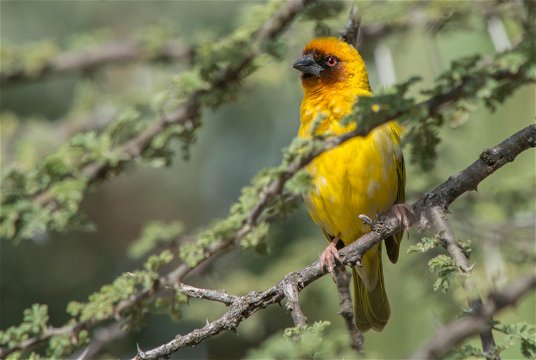
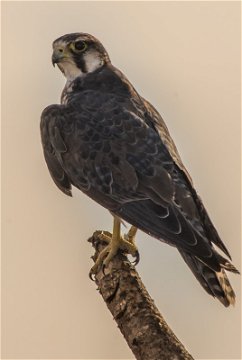
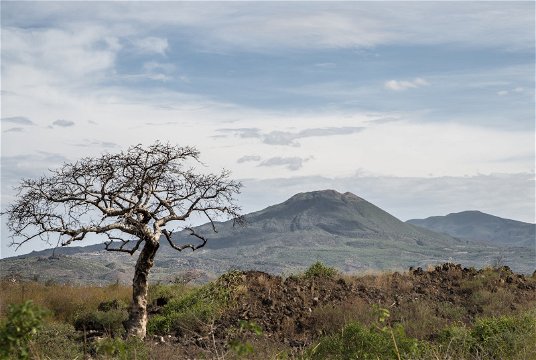
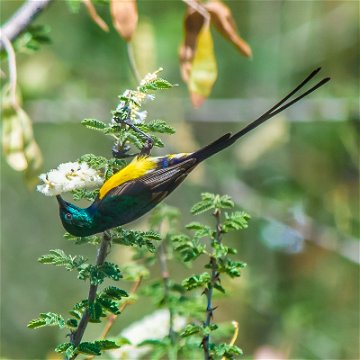



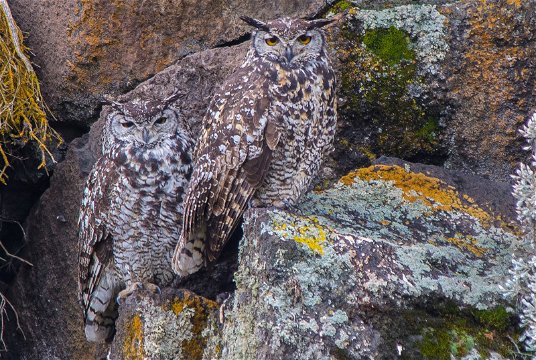
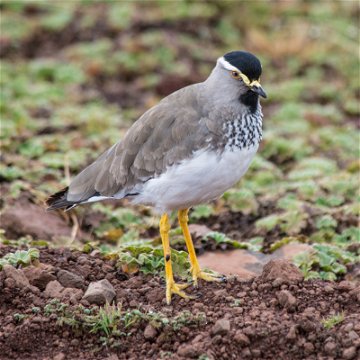
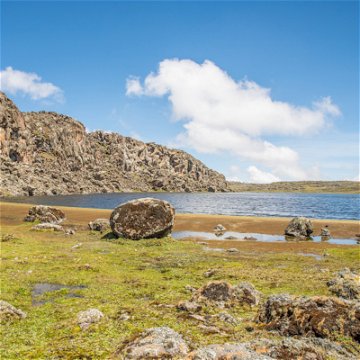
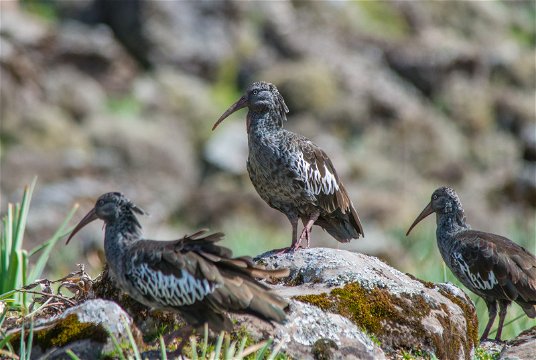

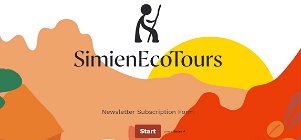
Share This Page